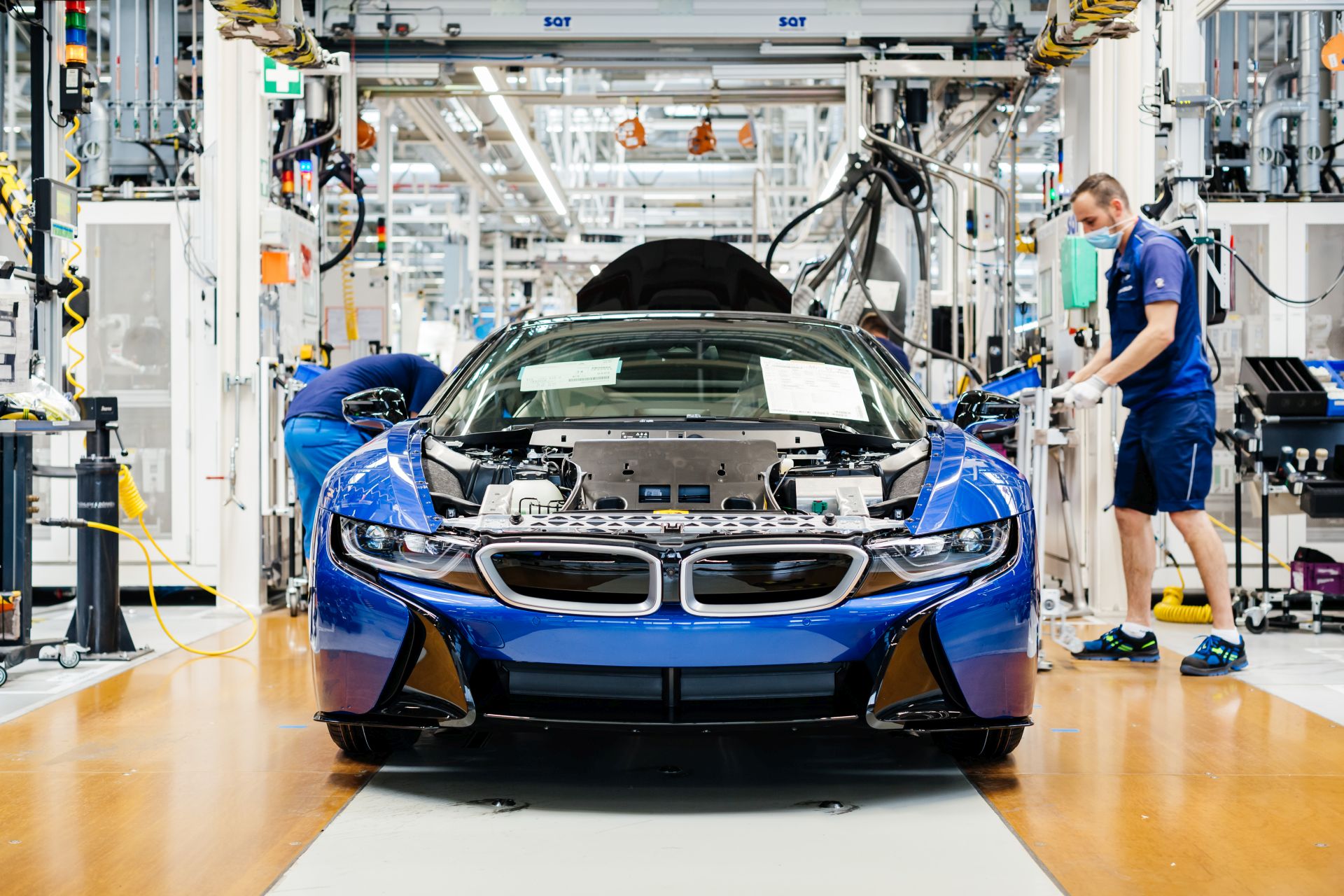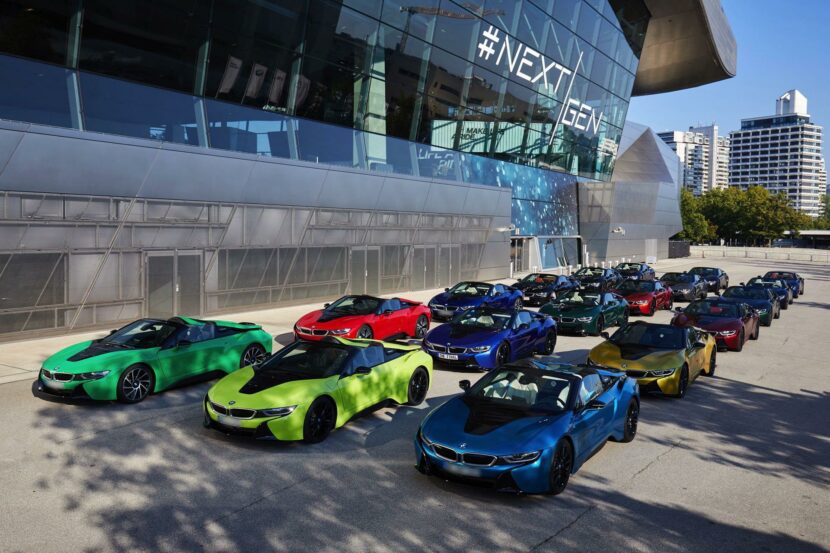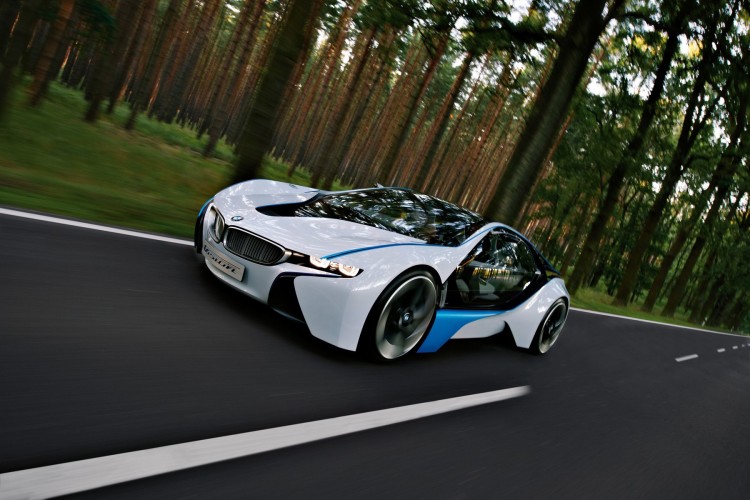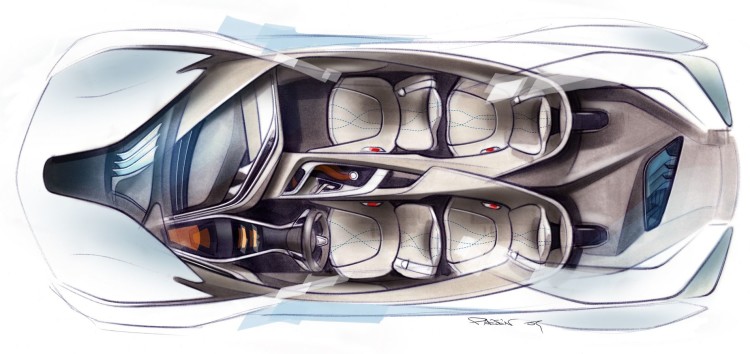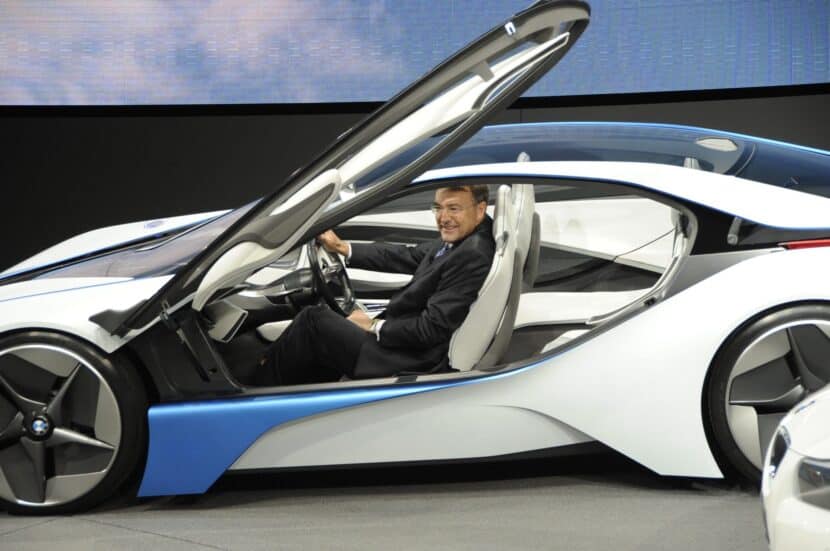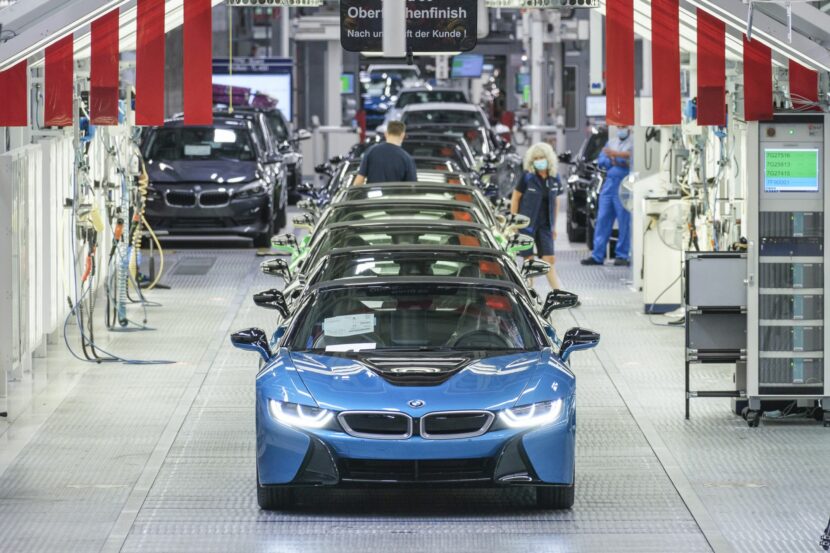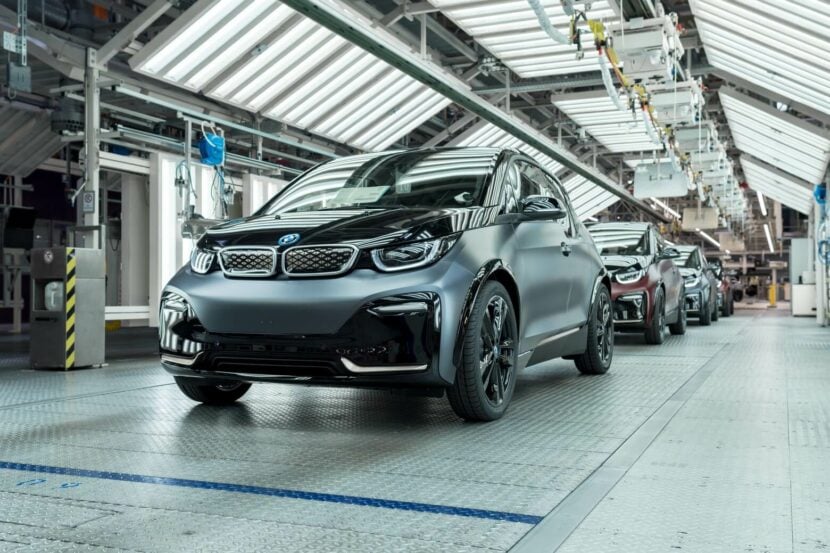One of BMW’s most striking production cars ever is the i8 mid-engined plug-in hybrid sports car, which looks like a concept for the road (and it stayed very close to the daring 2009 Vision EfficientDynamics design study that previewed it). The i8 was introduced in 2014 and was kept in production through 2020.
20,000 Units Sold Globally
It sold over 20,000 units, and, as a production model, the i8 helped BMW cement its image as an efficiency-conscious manufacturer of sporty cars, a design trendsetter, and a pioneer of electrification. However, according to Steve Saxty, the author of a book called “BMW by Design,” the Bavarian automaker didn’t initially intend to put the i8 into production.
The Vision EfficientDynamics concept was apparently initially created only to draw attention away from the fact that BMW was working on an electric city car. The idea to create the Vision EfficientDynamics concept stemmed from a desire within BMW to show a different kind of electrified vehicle, something different from all the city cars that competitors were showing at the time, and to also hide the manufacturer’s plan to put a small electric city car into production.
According to Saxty’s book, BMW design boss Adrian van Hooydonk was the one who, in late 2008, suggested that it would be wise to create the Vision EfficientDynamics. BMW did the engineering work to see if it was possible to produce a sports car with M3 levels of performance further but with far superior efficiency, and it was deemed feasible thanks to the use of a small three-cylinder turbocharged engine boosted by electric motors and all-wheel drive.
In early 2009, BMW held an internal competition, and over 40 proposals were submitted for the vehicle’s design. BMW chose Mario Majdandzic’s exterior design, and Jochen Paesen’s interior design, but at this point, there were still no plans to put the vehicle into production.
Frankfurt Auto Show Changed Its Fate
When the BMW Vision EfficientDynamics concept was unveiled at IAA 2009, it shared the limelight with other efficiency-minded plug-in vehicles, such as the Volkswagen XL1 and Tesla Model S, but with its flamboyant and futuristic design, it was one of the concepts that stole the show that year.
Seeing the remarkably positive reaction that it had garnered at the auto show, as well as the fact that Mercedes-Benz had announced that it was going to put the SLS sports car (revealed at the same venue) into production, BMW CEO at the time Norbert Reithofer announced that that they were indeed also looking at ways of turning the concept into a series model.
However, apparently, Reithofer wasn’t making any previously discussed plans public. The book says he was acting on the spur of the moment, riding the wave of positive impressions created by the concept, without actually considering how BMW would go about building the car.
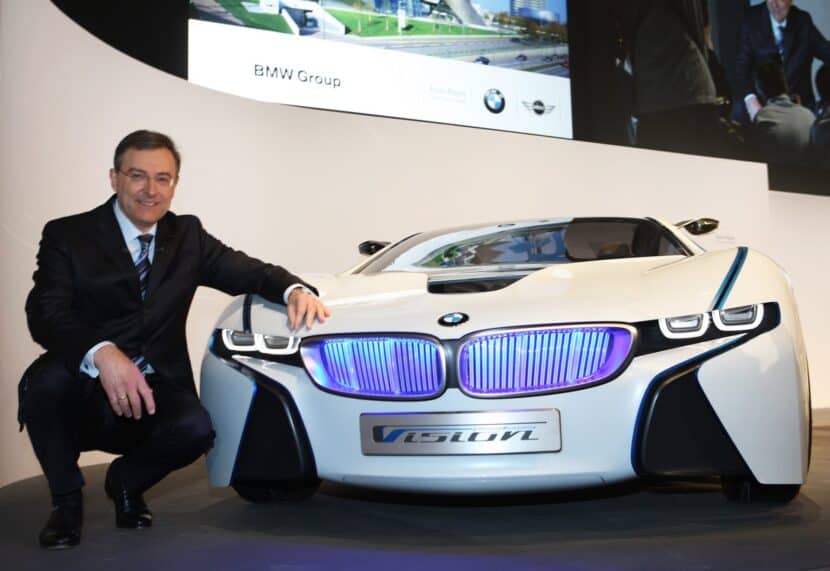
At the time of the Vision EfficientDynamic’s IAA debut, it was a one-off design prototype, but by the middle of the next year, 2010, an actual 6 Series-based mule was created. The mule was presented to board members at the BMW test track in Aschheim where Norbert Reithofer also had a go and absolutely loved the way the car drove.
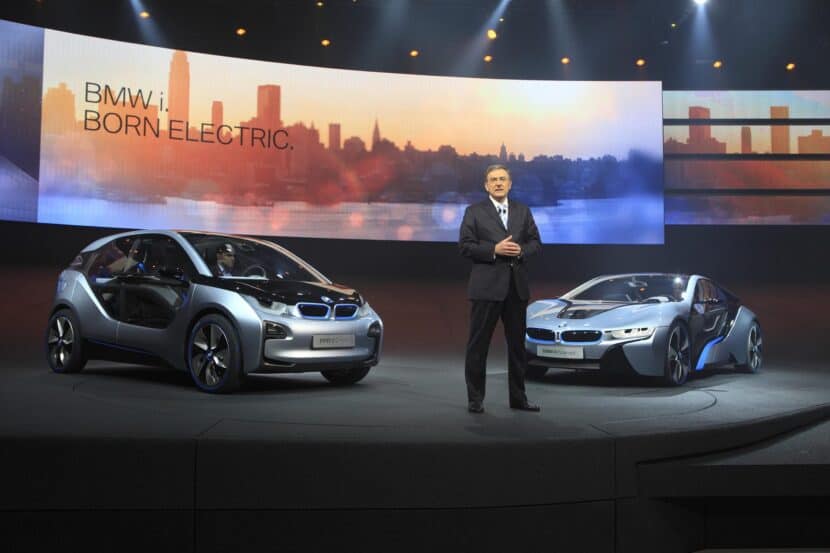
It was after this track test that the decision to create the i8 was made, and it took another three years for the production model to materialize. Interestingly, this also influenced the i3’s design quite significantly, since the two were part of the same BMW i lineup, so they both needed to have the same sleek, futuristic, and sporty style.
So not only did the i8 get the green light after the i3, but it ended up influencing its design to become a bit sportier than BMW had initially envisioned the model to be. The i3 ended up being a huge sales success for BMW—at one point it was the second-best-selling electric vehicle after the ubiquitous Nissan Leaf, proving that BMW had created a small, premium electric vehicle with strong global appeal.
BMW i3 and i8 – A Pivotal Moment in BMW’s History
Today neither the i3 nor the i8 are in production, but both left a huge mark not only in terms of the powertrain technology they promoted but also when it comes to the design of future BMWs. In giving up on the creation of an M1 Hommage that would have been steeped in the brand’s history and heritage, BMW created a futuristic interpretation of an electrified sports car whose blend of design, performance, and efficiency is still unmatched to this day (even by BMW itself).
The i8’s influence on the i3 was also important. Had BMW not made the i8, the i3 would have been quite a different vehicle, especially in terms of its design, and this could have affected its global success. In fact, BMW initially envisioned the i3 to not even carry the brand’s traditional design cues (mainly the dual-kidney grille) or even the badge, and there was a chance it could have ended up being sold under a different brand name since it was deemed so different to anything BMW had made before that it could have diluted the brand.
The i3, even with its tall and boxy look, as well as the high driving position and its other quirks, still found a lot of success, and part of it can be attributed to BMW’s change of plans to also make the i8 a production model.
Saxty’s books go into a lot more detail about the BMW i3 and i8, and its predecessor – the Vision EfficientDynamics – so they are absolutely worth a read. The three-volume boxed set will be available soon – at a pre-order price of $299.95/€270/£78.11. Alternatively, the principal book, “BMW by Design” is available immediately for $99.95/€90.02/£88.10; all with free shipping in USA, UK and EU.


